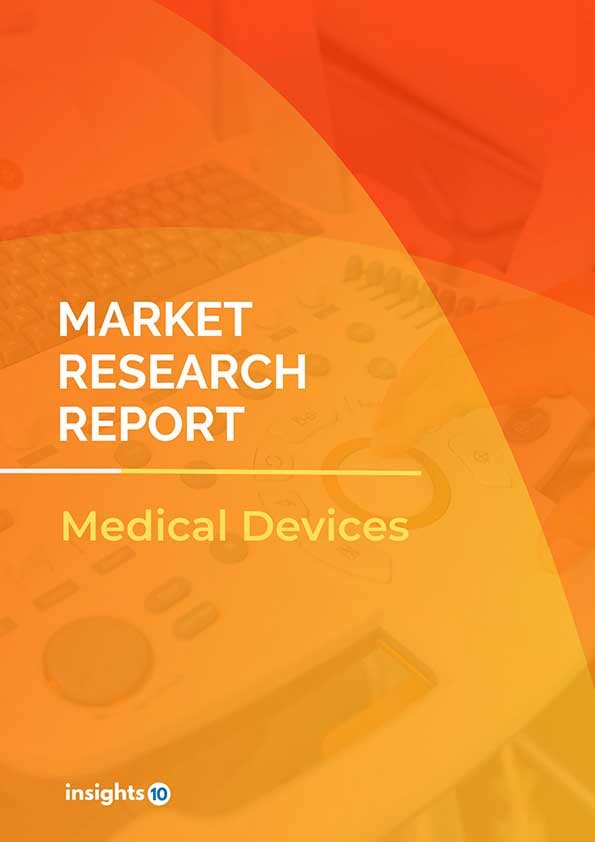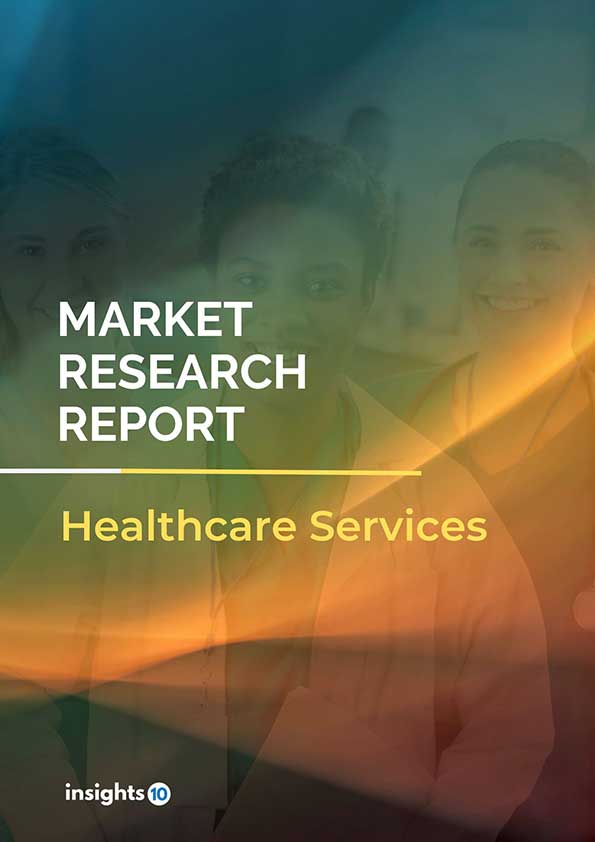Libya Electronic Health Records Market Analysis
The Libya Electronic Health Record (EHR) market size was valued at $xx Bn in 2022 and is estimated to expand at a compound annual growth rate (CAGR) of xx% from 2022 to 2030 and will reach $xx Bn in 2030. The market is segmented by product type, application type, and end user. The Libya EHR market will grow due to the growing need for efficient and cost-effective healthcare delivery and the increasing adoption of telemedicine. The key market players are Cerner Corporation, Allscripts, McKesson Corporation, and others.
Buy Now

Libya Electronic Health Record (EHR) Market Executive Summary
The Libya Electronic Health Record (EHR) market size was valued at $xx Bn in 2022 and is estimated to expand at a compound annual growth rate (CAGR) of xx% from 2022 to 2030 and will reach $xx Bn in 2030. In 2021, it is estimated that healthcare expenditure in Libya accounts for less than 5% of its GDP. The healthcare system in Libya has been severely impacted by the conflict, leading to a shortage of healthcare personnel, limited resources, and a decline in the quality of care. The government has struggled to invest in the healthcare sector due to the ongoing challenges, and out-of-pocket expenditure by individuals still constitutes the majority of healthcare financing in Libya.
The digital health and electronic health record (EHR) landscape in Libya is limited, due in part to the ongoing political and security challenges in the country. As of 2021, the use of EHRs in Libya is still in the early stages of development, with limited implementation and adoption. The infrastructure for digital health, including access to technology and the internet, is also limited, making it difficult for healthcare providers to adopt and utilize EHRs.
Given the ongoing challenges in the country, it is unlikely that the digital health and EHR landscape in Libya will see significant growth in the near future. However, as the situation stabilizes and the healthcare system begins to recover, it may be possible for the government and stakeholders to focus on developing a framework for the use of digital health and EHRs in the country. Hence, the EHR market will grow in the coming years.
Market Dynamics
Market Growth Drivers
As mobile devices become more prevalent in Libya, businesses will have additional opportunities to offer mobile health solutions like mobile-accessible EHRs. In Libya, interoperability between EHR systems is a major problem. Businesses well-positioned to capitalize on this potential are those that can provide interoperable solutions for diverse EHR systems. Additionally, as Libya's internet access improves, cloud-based EHR solutions are becoming more and more popular because they are more affordable and user-friendly than on-premises options.
As more data is obtained through EHRs, organizations may also be able to offer data analytics services and software, such as data visualization and predictive analytics tools.
Market Restraints
Adoption and implementation in Libya are limited, due in part to the ongoing political and security challenges in the country. The healthcare system in Libya has been severely impacted by the conflict, and the adoption of EHRs and other forms of digital technology in healthcare has been limited.
Moreover, the Libyan government has not prioritized the development of a legal framework for the use of EHRs, and the focus has been on addressing the immediate and pressing needs of the healthcare sector.
Competitive Landscape
Key Players
- Cerner Corporation
- Allscripts Healthcare Solutions
- McKesson Corporation
- Epic Systems Corporation
- GE Healthcare
- Oracle Corporation
1. Executive Summary
1.1 Digital Health Overview
1.2 Global Scenario
1.3 Country Overview
1.4 Healthcare Scenario in Country
1.5 Digital Health Policy in Country
1.6 Recent Developments in the Country
2. Market Size and Forecasting
2.1 Market Size (With Excel and Methodology)
2.2 Market Segmentation (Check all Segments in Segmentation Section)
3. Market Dynamics
3.1 Market Drivers
3.2 Market Restraints
4. Competitive Landscape
4.1 Major Market Share
4.2 Key Company Profile (Check all Companies in the Summary Section)
4.2.1 Company
4.2.1.1 Overview
4.2.1.2 Product Applications and Services
4.2.1.3 Recent Developments
4.2.1.4 Partnerships Ecosystem
4.2.1.5 Financials (Based on Availability)
5. Reimbursement Scenario
5.1 Reimbursement Regulation
5.2 Reimbursement Process for Diagnosis
5.3 Reimbursement Process for Treatment
6. Methodology and Scope
Electronic Health Records Market Segmentation
By Product (Revenue, USD Billion):
Web-based and cloud-based software is more affordable since it saves on additional costs like license fees, regular upgrades, and device upkeep. Additionally, it reduces the need for IT workers because SaaS providers help with software installation, configuration, testing, operation, and upgrades. The cost-effectiveness of cloud-based EHR systems in small healthcare organizations will therefore fuel developments as well as the expansion of the category. MHealth services
- Web/Cloud-based EHR software
- On-premise EHR software
By Application Type (Revenue, USD Billion):
Large amounts of patient health data may be stored and processed by EHRs, which aids doctors in automating both financial and operational operations with rapid and simple access. Therefore, integrated EHR and practice management software navigates all tasks, making it easier for front-line healthcare providers to do their jobs, and will therefore drive the segment's revenue during the anticipated time period.
- E-prescription
- Practice management
- Referral management
- Patient management
- Population health management
By End User (Revenue, USD Billion):
By 2027, the category of ambulatory surgical centers is expected to rise at a 7.1% annual rate. The acceptance of EHR in these facilities will be fueled by ambulatory surgical centers' growing preference for digital technologies to efficiently manage workflow. These are outpatient facilities offering planned surgeries and same-day surgical services.
- Hospitals
- Specialty centers
- Clinics
- Ambulatory surgical centers
- Others
Methodology for Database Creation
Our database offers a comprehensive list of healthcare centers, meticulously curated to provide detailed information on a wide range of specialties and services. It includes top-tier hospitals, clinics, and diagnostic facilities across 30 countries and 24 specialties, ensuring users can find the healthcare services they need.
Additionally, we provide a comprehensive list of Key Opinion Leaders (KOLs) based on your requirements. Our curated list captures various crucial aspects of the KOLs, offering more than just general information. Whether you're looking to boost brand awareness, drive engagement, or launch a new product, our extensive list of KOLs ensures you have the right experts by your side. Covering 30 countries and 36 specialties, our database guarantees access to the best KOLs in the healthcare industry, supporting strategic decisions and enhancing your initiatives.
How Do We Get It?
Our database is created and maintained through a combination of secondary and primary research methodologies.
1. Secondary Research
With many years of experience in the healthcare field, we have our own rich proprietary data from various past projects. This historical data serves as the foundation for our database. Our continuous process of gathering data involves:
- Analyzing historical proprietary data collected from multiple projects.
- Regularly updating our existing data sets with new findings and trends.
- Ensuring data consistency and accuracy through rigorous validation processes.
With extensive experience in the field, we have developed a proprietary GenAI-based technology that is uniquely tailored to our organization. This advanced technology enables us to scan a wide array of relevant information sources across the internet. Our data-gathering process includes:
- Searching through academic conferences, published research, citations, and social media platforms
- Collecting and compiling diverse data to build a comprehensive and detailed database
- Continuously updating our database with new information to ensure its relevance and accuracy
2. Primary Research
To complement and validate our secondary data, we engage in primary research through local tie-ups and partnerships. This process involves:
- Collaborating with local healthcare providers, hospitals, and clinics to gather real-time data.
- Conducting surveys, interviews, and field studies to collect fresh data directly from the source.
- Continuously refreshing our database to ensure that the information remains current and reliable.
- Validating secondary data through cross-referencing with primary data to ensure accuracy and relevance.
Combining Secondary and Primary Research
By integrating both secondary and primary research methodologies, we ensure that our database is comprehensive, accurate, and up-to-date. The combined process involves:
- Merging historical data from secondary research with real-time data from primary research.
- Conducting thorough data validation and cleansing to remove inconsistencies and errors.
- Organizing data into a structured format that is easily accessible and usable for various applications.
- Continuously monitoring and updating the database to reflect the latest developments and trends in the healthcare field.
Through this meticulous process, we create a final database tailored to each region and domain within the healthcare industry. This approach ensures that our clients receive reliable and relevant data, empowering them to make informed decisions and drive innovation in their respective fields.
To request a free sample copy of this report, please complete the form below.
We value your inquiry and offer free customization with every report to fulfil your exact research needs.









































